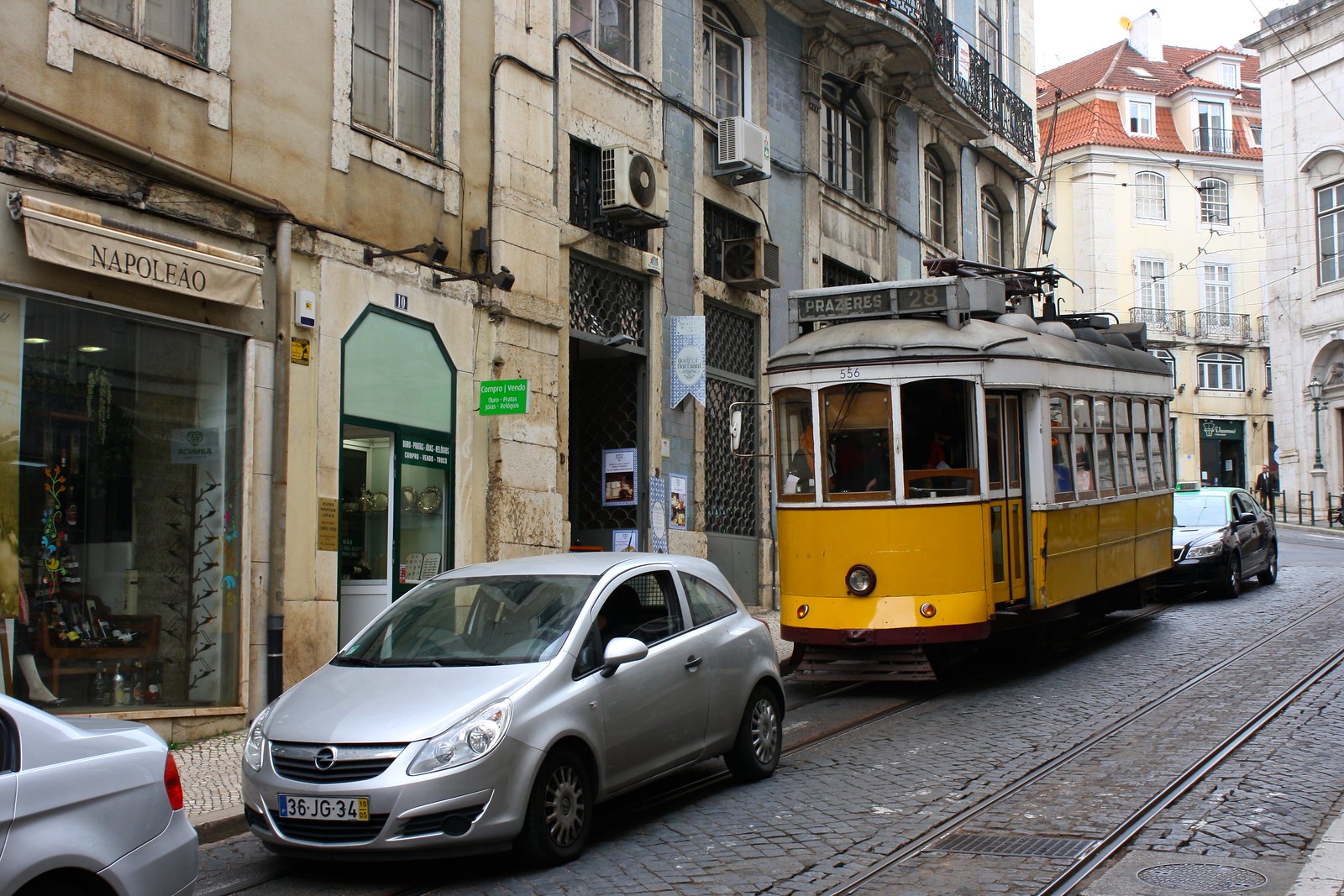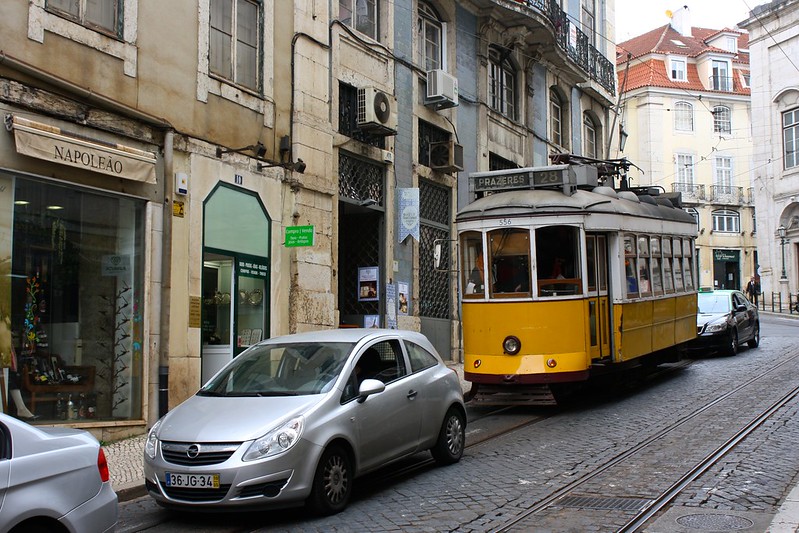Photo Post: Impressions of Lisbon, Portugal
 |
| The famous Tram 28 |
Before visiting Portugal, I had always had this image in my mind of the country as warm, sunny, and kind of dreamy. Lisbon, the capital, lived up to all those preconceptions, but the actual, living-and-breathing city turned out to be much more interesting than I thought it would be when I visited in April.
 |
| Orange blossoms in the Moorish Castle |
I was really struck at the similarities between Lisbon and its southern neighbors in Spain, like Sevilla, Málaga, or Córdoba. The hilltop Moorish fortresses, the red-tile roofs, the winding, whitewashed streets, and the warm, refreshing atmosphere reminded me so much of Andalucía. It really shouldn’t be so surprising, though, because it wasn’t until the 1200s that southern Portugal was separated politically from Spain. I thought it was too good to be true when I happened upon some orange blossoms by the cathedral. Their delicate springtime fragrance became synonymous with springtime in Andalucía for me, so to smell it again after a year away from the south of Spain was glorious.
 |
| Downtown Lisbon, seen from the Moorish Castle |
Lisbon also reminded me of another southern European capital: Rome. Both date back almost 3,000 years, both are built on seven hills, both have playful Baroque churches sitting on every other corner, and both have countless streets and alleyways in various states of crumbling neglect. Both were also once the seat of empire: while Rome commanded the Mediterranean, Lisbon was the capital of a seafaring realm that dominated the Atlantic for centuries. But if I had to choose between the two, I might just have to go with Lisbon…it’s simply so much cheaper and not as mobbed by tourists!
 |
| Quiet streets in the Alfama district |
But enough comparing. Lisbon’s unique charm has to be found partly in the weight of history that you can so easily perceive. Although little remains of the 3,000-year-old Phoenician trading post, the original name comes down to us from Allis Ubbo to the svelte “leezh-BOE-ah” in modern European Portuguese. Roman excavations lie beneath the upscale apartment blocks, a Romanesque cathedral stands in the shadows of a Moorish castle, and the snazzy Baixa neighborhood—which was rebuilt in a sturdy grid of streets after the devastating 1755 earthquake—has the ruins of a Gothic convent to remind it of the city’s tragic past.
 |
| From the Miradouro de Santa Catalina |
My inner history buff loved getting to experience such tangible remains of the past, but I think one scene will always stand out in my memory. Having emerged from the metro on my way to check in at my hostel, I was a little wary of a gathering of people outside the stairway. I soon realized folks had simply gathered to enjoy some street performers that had set up beneath the criss-crossing electrical lines that power the city’s historic trams. The sun’s falling light cast the Baixo Chiado neighborhood in an inviting, warm redness; Lisbonites popped in and out of shops, bars, and churches; creaky trams laden with tourists rumbled by; and the smooth, white mosaic of stones that lined the sidewalk carried my feet up the hill to my temporary home in southern Portugal.
What was your favorite picture from this post? Have you been to Europe’s westernmost capital before?
